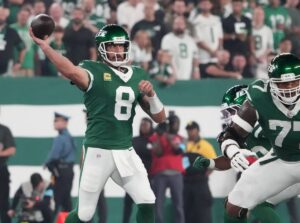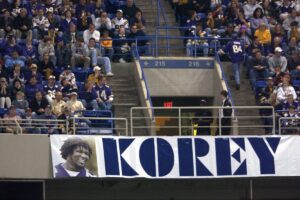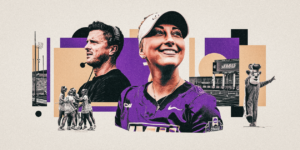Nasa has decided that the two astronauts who are currently on the International Space Station will return next February on a SpaceX crewed Dragon flight where two seats have been made available for Sunita “Suni” Williams and Barry “Butch” Wilmore.
Space agency officials said there was “too much uncertainty” for the astronauts to return on the craft that brought them to the space station, Boeing’s Starliner, which ran into problems after the capsule developed small leaks. and some of its thrusters failed.
The announcement comes after an “agency-level review” Saturday that included Bill Nelson, the agency administrator.
“Nasa has decided that Butch and Suni will return together [SpaceX’s] Crew-9 next February, and that Starliner will return unmanned,” Nelson said at a press conference on Saturday.
“I want you to know that Boeing worked very hard with NASA to get the necessary data to make this decision. We want to further understand the root causes and understand the design improvements so that the Boeing Starliner will serve as an important part of our assured crew access to the ISS,” he added.
“Spaceflight is risky, even at its safest and even at its most routine, and a test flight by nature is neither safe nor routine, hence the decision to keep Butch and Suni aboard the International Space Station and the Boeing Starliner bringing home unmanned is the result of a commitment to safety,” Nelson continued.
Williams and Wilmore, two veteran astronauts, arrived at the ISS on June 6 as part of a crucial test by Starliner before it can receive Nasa approval for routine flights. However, the planned eight-day mission turned into a months-long stay for Williams and Wilmore after technical problems emerged, including reaction control thrusters that failed during Starliner’s first docking attempt.
Four of the spacecraft’s five failed thrusters have since reactivated in orbit, the Associated Press reported reportsand adds that the thrusters are crucial for the spacecraft to return from the ISS after undocking and to keep the capsule in the right position for the deorbit.
On August 2, Boeing said in a blog post that it has conducted “extensive testing of its propulsion system in space and on the ground.” The controversial manufacturer, which struggled to compete with SpaceX and received $1.6 billion in losses on the Starliner program, added: “The testing confirmed 27 of 28 RCS [reaction control system] thrusters are healthy and back to full operational capability. Starliner’s propulsion system also maintains redundancy and the helium levels remain stable.”
On Saturday, Steve Stich, program manager for NASA’s commercial crew program, described the decision to return the Starliner unmanned in September: “The bottom line regarding the return of Starliner is … there was just too much uncertainty in the prediction of the thrusters . .
“If we had a model, if we had a way to accurately predict what the thrusters would do for the undocking and burning all the way through the de-orbit and through the separation sequence, I think we would” took another action, but when we looked at the data and looked at the potential for thrust errors with a crew on board… it was just too much risk with the crew,” Stich added.
While waiting on the ISS to join the SpaceX team next February, Williams and Wilmore will conduct science station maintenance, among other research duties, according to Dana Weigel, manager of Nasa’s ISS program.
“They will carry out the SpaceX 31 research and cargo mission,” Weigel said Saturday, referring to the commercial resupply service mission to the ISS.
“We may have some spacewalks for them towards the end of their expedition. Since they’ve been up there, they’ve been a welcome set of helping hands. They’ve already done about 100 hours of work on 42 different experiments, and they’ve helped us with some of the critical station maintenance we’ve had on board,” she added.
In response to a question about how NASA plans to rebuild trust with Boeing, Jim Free, associate administrator of NASA, replied: “I don’t think it’s a trust issue at all. I don’t think we are rebuilding trust. I think we look at the data, and we see the data and the uncertainty that’s there differently than Boeing does. It is not a matter of trust. It is our technical expertise and our experience that we have to balance.”
Ken Bowersox, associate administrator of Nasa’s space operations directorate, acknowledged the “tense conversations” Nasa had with Boeing before going on to say: “People have emotional investment in either option and that gives you a healthy discourse . But after that you have to do work to keep your team together, to keep your team recovered and ready for the next edition and I will admit that we have work to do there.”
According to NasaSpaceX’s Crew-9 mission won’t launch until September 24.
Currently, Nasa and SpaceX are working on several items before launch, including seat reconfiguration on the Crew-9 Dragon, in addition to modifying the manifest to carry additional cargo and personal belongings, as well as Dragon-specific spacesuits for Wilmore and Williams.


